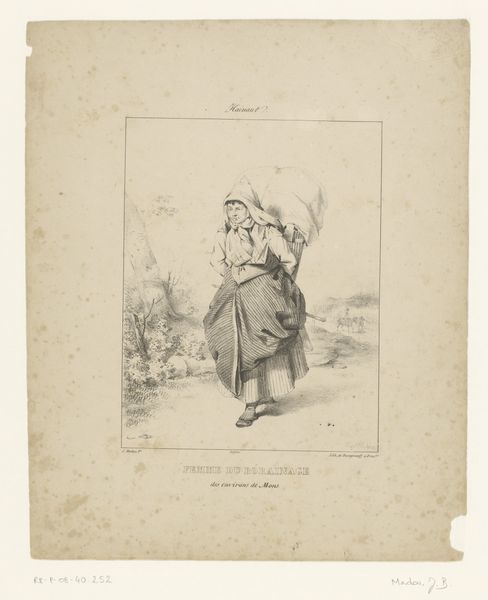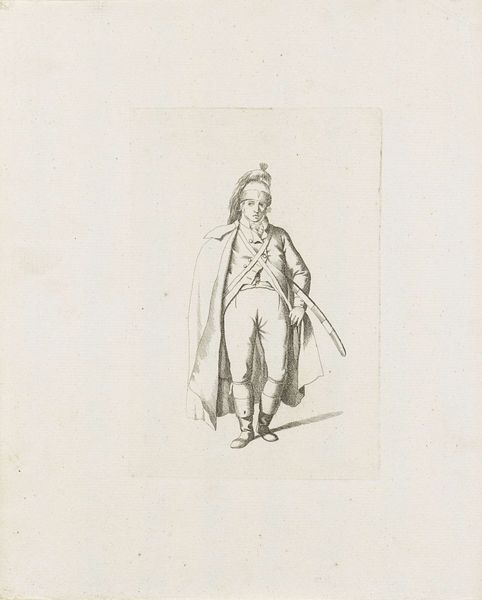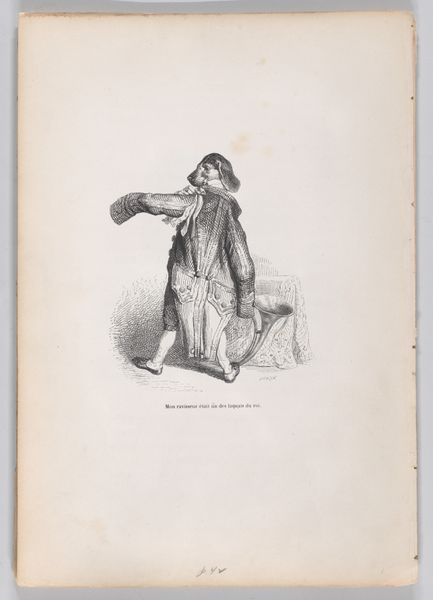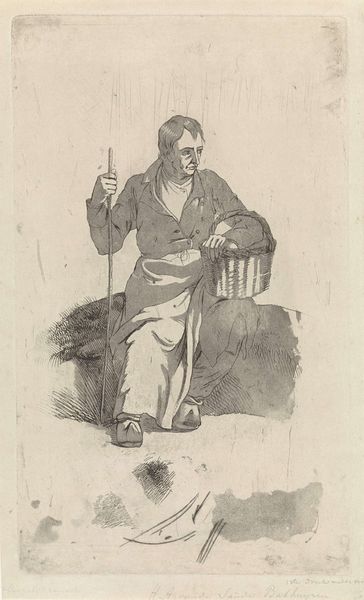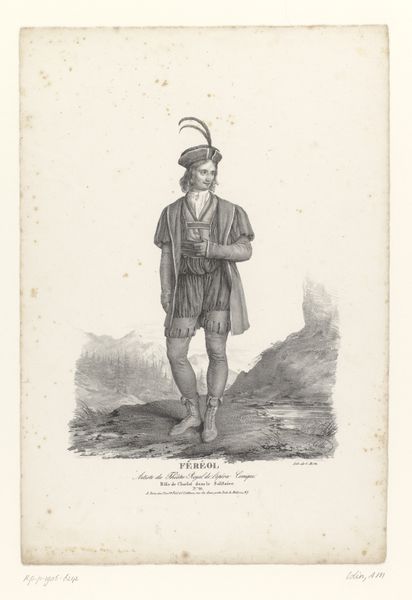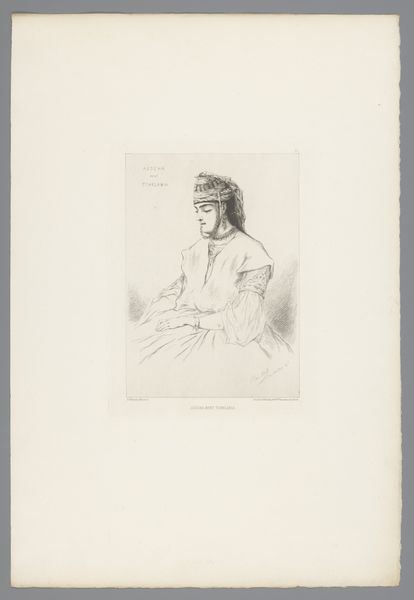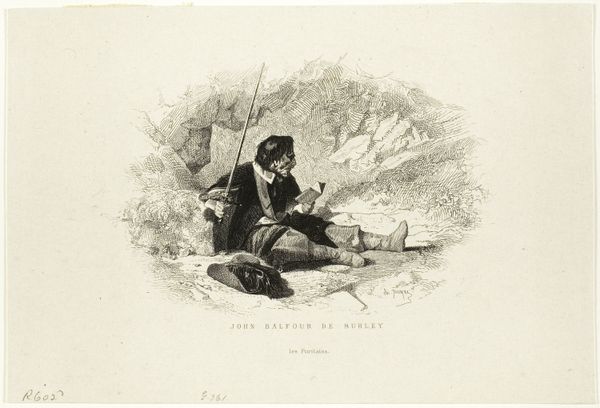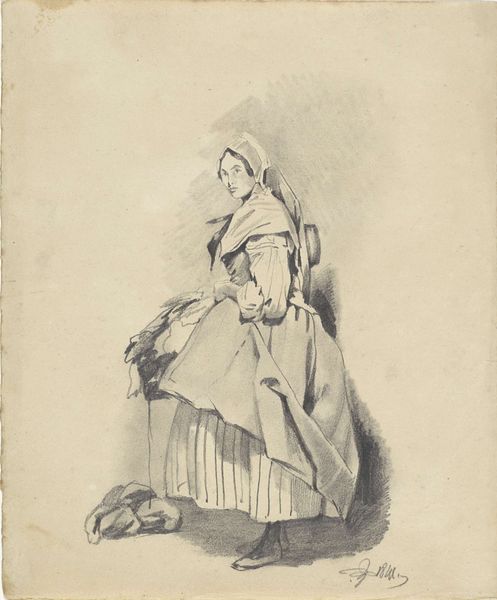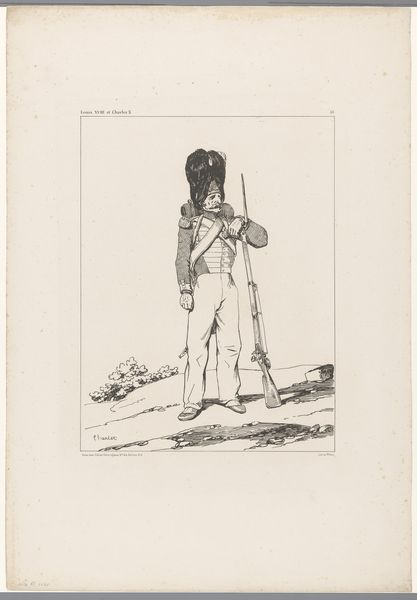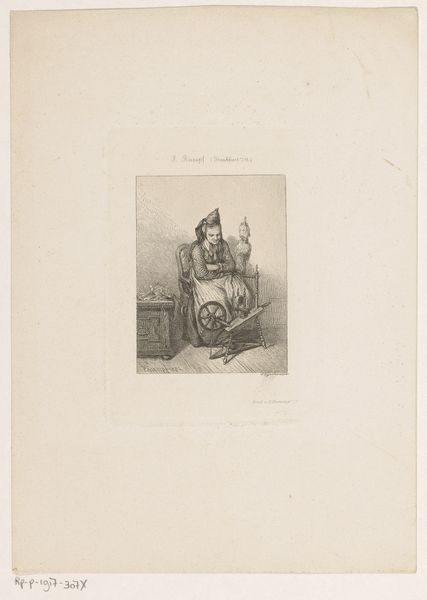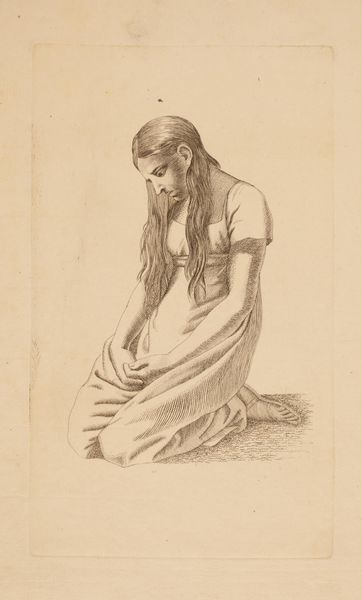
drawing, photography, pencil
#
portrait
#
drawing
#
photography
#
pencil
#
orientalism
#
genre-painting
Dimensions: height 210 mm, width 171 mm, height 352 mm, width 284 mm
Copyright: Rijks Museum: Open Domain
Curator: This is a photograph of a drawing titled "Fotoreproductie van een tekening van een Turkse vrouw van Gentile Bellini," created in 1857 by Roger Fenton. The drawing is in pencil. Editor: The starkness of the image really grabs me. There’s such a sense of formality, almost theatrical, in the way this woman is presented. It's an image frozen in time. Curator: It does capture a certain exoticism, doesn't it? Consider the woman's attire – particularly that quite distinctive, tall headdress. It's highly symbolic, evoking the Orient so frequently idealized in Western art. It calls forth the powerful fascination, and let’s be frank, misrepresentation, inherent in the genre. Editor: Absolutely. And this photograph, in a way, acts as a document, both of the original Bellini drawing and of Fenton’s own perception, and, I'd argue, of the Victorian gaze. It reinforces stereotypes, turning this woman into an object for Western consumption. You know, the orientalist trope of submissive femininity is ever-present. Curator: Yes, it's a complex dance between representation and misrepresentation. The very act of reproducing the Bellini drawing as a photograph changes its meaning. Bellini was an eyewitness, yet Fenton's photograph carries its own authority – creating layers of removal. Is this then about seeing, or about seeing seeing? Editor: Precisely. I mean, consider Fenton's own history. He famously photographed the Crimean War, but often staged his images. What 'truth' are we actually looking at here? The cultural and political weight behind these artistic decisions cannot be dismissed. It implicates both artists in their colonial worldview. Curator: The details themselves tell a story, though. That finely rendered fabric, the subtle lines suggesting her hands. Photography at that time could reveal elements missed even by the most observant artist. There’s a desire to classify, to understand, but that's also where the dangers of the ethnographic gaze exist. Editor: Agreed. It becomes about power, not appreciation. By reducing her to a visual spectacle, her individual agency disappears. It's an echo of historical power dynamics, preserved in this delicate yet loaded image. Thank you, this gives me a lot to consider about cultural biases in historical portraiture. Curator: Indeed, a seemingly simple image opens up a rather complicated reflection on historical context and visual tropes.
Comments
No comments
Be the first to comment and join the conversation on the ultimate creative platform.
